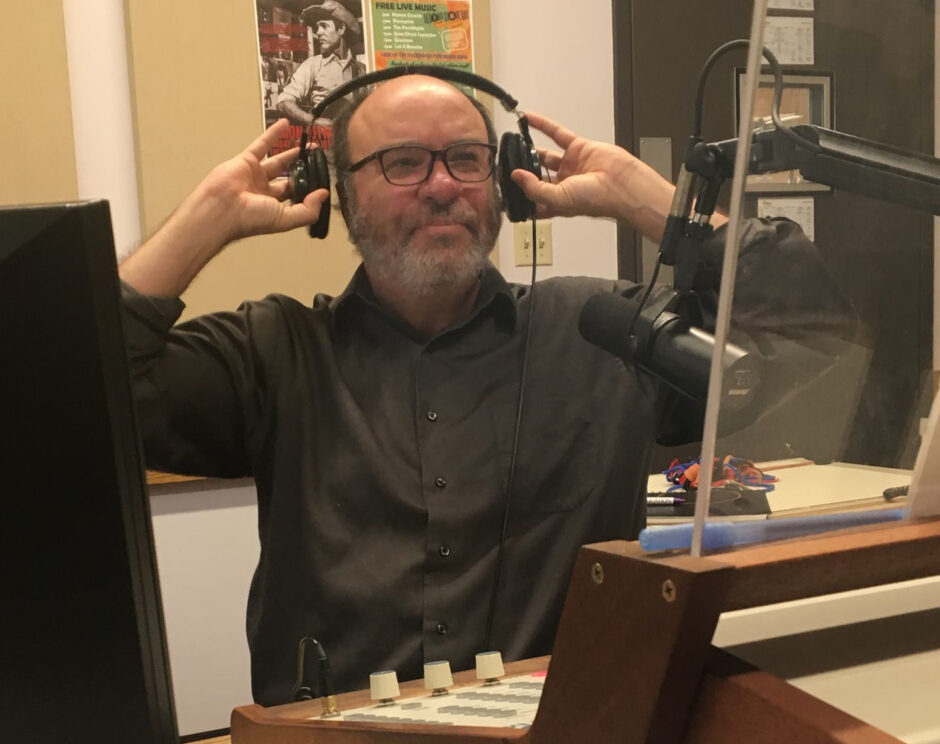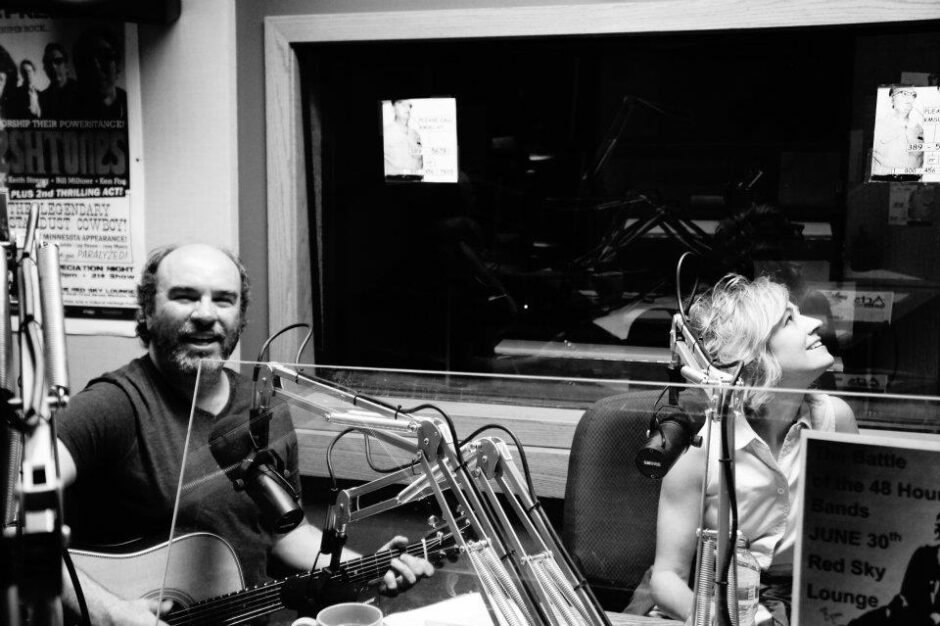I’m sure they’re around, somewhere, the old cassette tapes containing a lot of my firsts in journalism: My first news stories, first clumsy interviews, first broadcasts and first major mistakes. All of it during my freshman year at the campus radio station, KMSU.
From serving as a reporter, newscaster and DJ back then to hosting a program today as a volunteer, that radio station like the University itself has been part of my life, on and off, for 40 years.
I enrolled here from Wisconsin in the snow-white, ice cold January of 1982. I didn’t know a soul at the time, but at KMSU I quickly became part of an actual news team that went out and chased down stories and competed alongside other media in town. We were equipped with little cassette tape recorders with hand-held microphones. We’d come back to the studio, craft our stories on reel-to-reel tapes and submit them for the next newscast.

Journalism classes at the University were one thing. These experiences at KMSU were just that: Experience, ready or not. Too young or not. Terrified or not.
One of those cassette tapes will have on it the unforgettable moment in news director Ken Krall’s morning newscast where he broadcasts—o’er the hills and plains to who-knows-how-many real live listeners: “KMSU’s Joe Tougas was at the Mankato City Council meeting last night and filed this report …” At which point you’ll hear my voice channeling Rod Serling as I provide a serious, urgent report on the Mankato airport changing its flight schedules for the summer ahead. My first news story. It was terrible, but it was mine and at age 19 I was unstoppable.
KMSU gave me not only those kinds of firsts, but on-air adventures as well. And I don’t mean announcing. I mean on-air as in up-in-the-sky. Join me if you have the stomach:

The longest six hours of my life—at least up to that point—was when I agreed to help turn the station’s antenna, which was located above a 12-story Gage Tower residence hall. The antenna itself was, conservatively speaking, 200 feet high. Steve Wolf, station manager and chief engineer, hired me to help him with the task, saying there was some decent money in it. We met on a Saturday morning at the station, where he gave me a section of cable to wrap around myself like a belt. This cable included a hook to be centered at the belt buckle area. The hook was for the hundreds of rungs that were next to the antenna, rungs that rose up and into the distant white clouds of morning. So we climbed, stopping every 20 rungs or so to turn the antenna, or a section of it a little ways. Then up again. Further and further above Gage, above campus, above the town. A little hook on a metal rung and the spring wind menacingly pushing the antenna tower to and fro, creaking and groaning. Six hours.
We’d never discussed terms, as in what I’d get paid, and afterward I honestly didn’t think about much except hooks and rungs and denim belt loops and the many ways that could have gone poorly. The $60 payday, then, felt like a gold rush in my world which, of course, had become considerably smaller after swaying above it all for six hours.
That was in 1982. Over time, the antenna was eventually replaced. Gage was torn down in 2013 to make way for modern residence halls, and I miss looking at it and being reminded of those six hours. And a final note about Steve: During that whole incident in which he climbed and turned and moved quickly here to there hour after hour in the wind a mile to two above town … he wore no cable, had no hook.
Ten or so years later, when I was working in newspapers (where I put into practice the early lessons learned at KMSU) I ran into Marilee Rickard, station manager at KMSU, at a City Mouse performance at the Square Deal bar. I half-jokingly said that what KMSU needs is me to host a two-hour Friday night show devoted exclusively to the music of Frank Zappa.

She looked at me, looked at the band, seemed to think about it for 10 seconds and said: “I’d need a commitment of at least six months.”
What followed was five years of “City of Tiny Lights,” a show devoted to Zappa music and a place for me to share all the little details I’ve retained over the years about a musician who, as my ex-wife once said, “didn’t have to record everything.”
Marilee was key in opening the door to me and other volunteers who had ideas for radio shows, who brought their passion and geekdom to a larger audience. That’s all there today, and station manager Dwayne Magaw is carving out a new era that will continue giving students at the University unforgettable experiences and listeners near and far a glimpse into passionate, unique radio. Not to mention the arts patronage it provides throughout the community, from concerts by outsider artists such as the Legendary Stardust Cowboy to live jazz shows to the sold-out Pageant and Sing-Along events celebrating “Jesus Christ Superstar,” “Bat Out of Hell” and “Rocky Horror Picture Show.”
I owe the place a lot. For letting me share and talk about the music I love, yes. But more so for being my true, real-world training ground for newswriting and editing. A place where I learned quite young the terror and elation of my stories going public, and what it is I wanted to do.
I’m grateful because jobs in writing and reporting have given me a lot of moments in which I felt on top world. And thanks to my student days at KMSU, I always had a hook.
Speak Your Mind